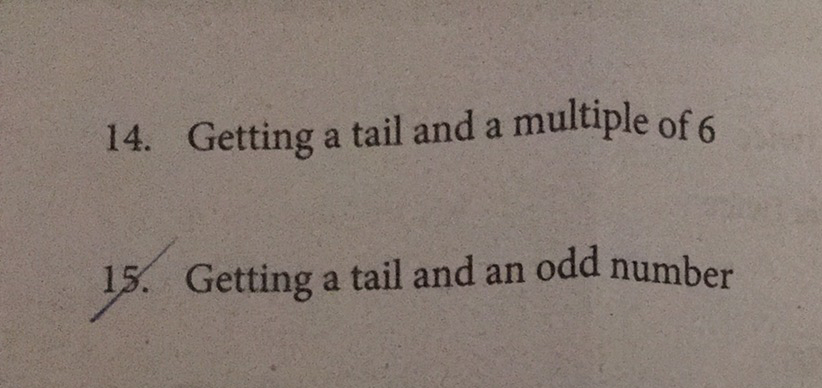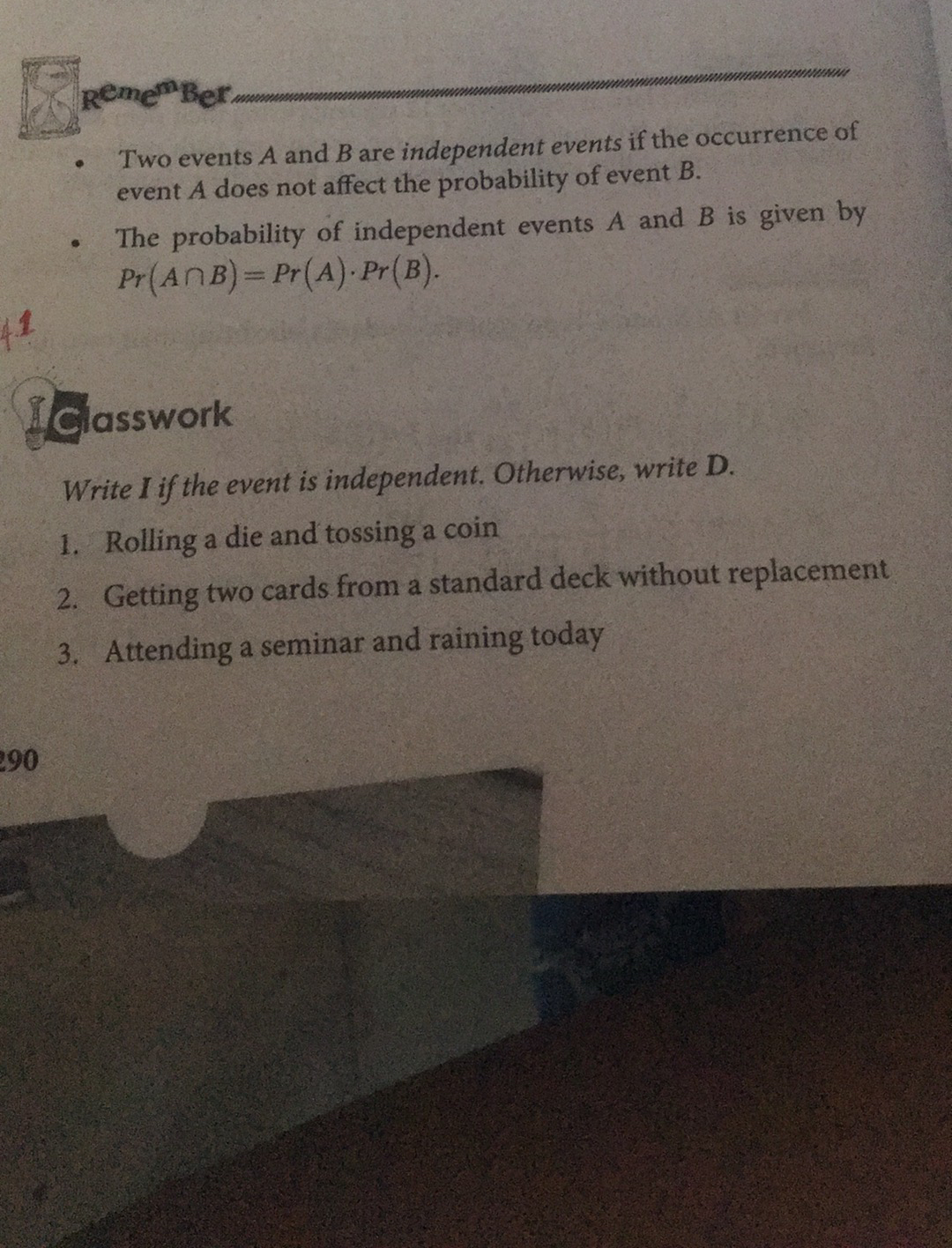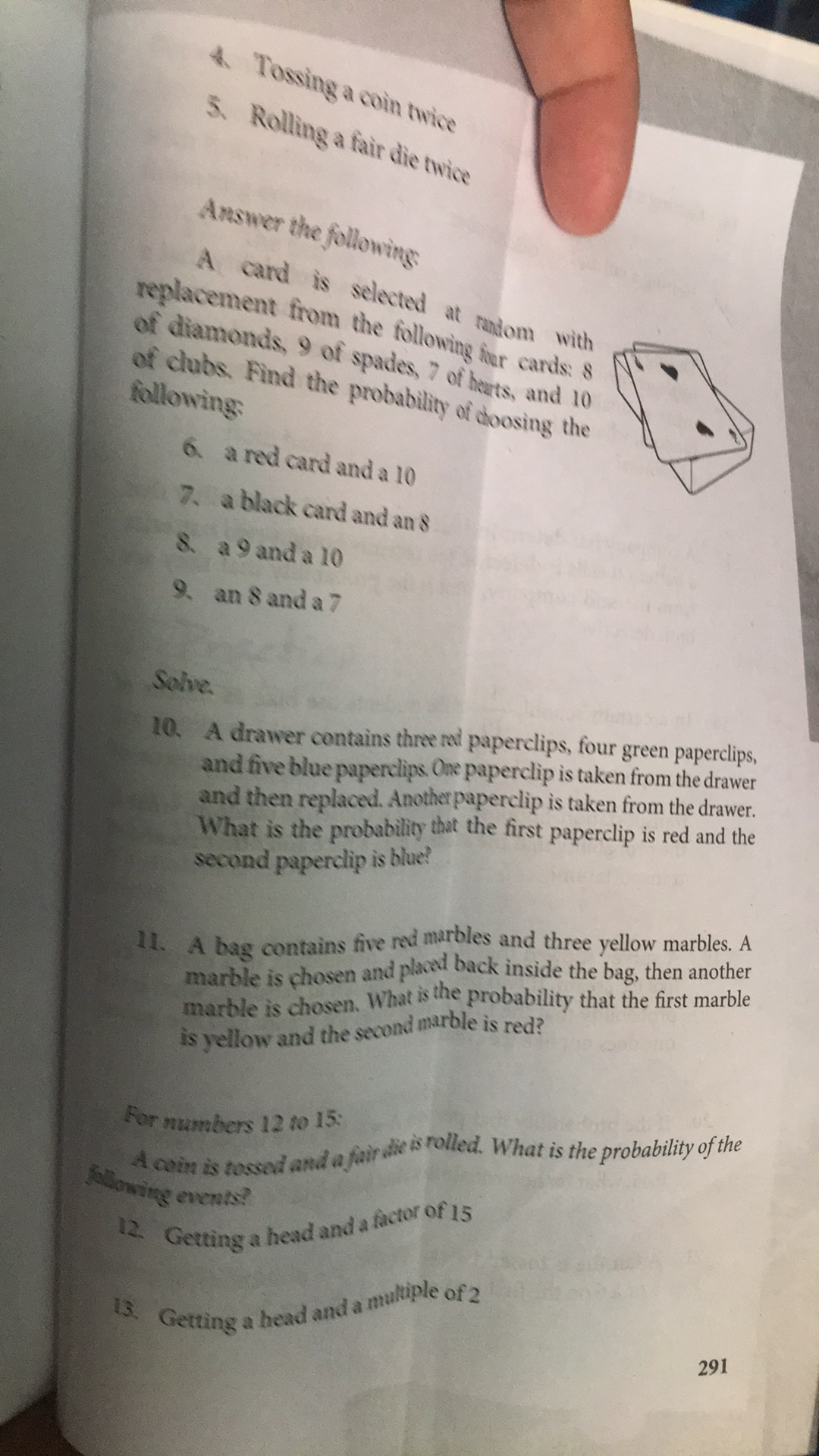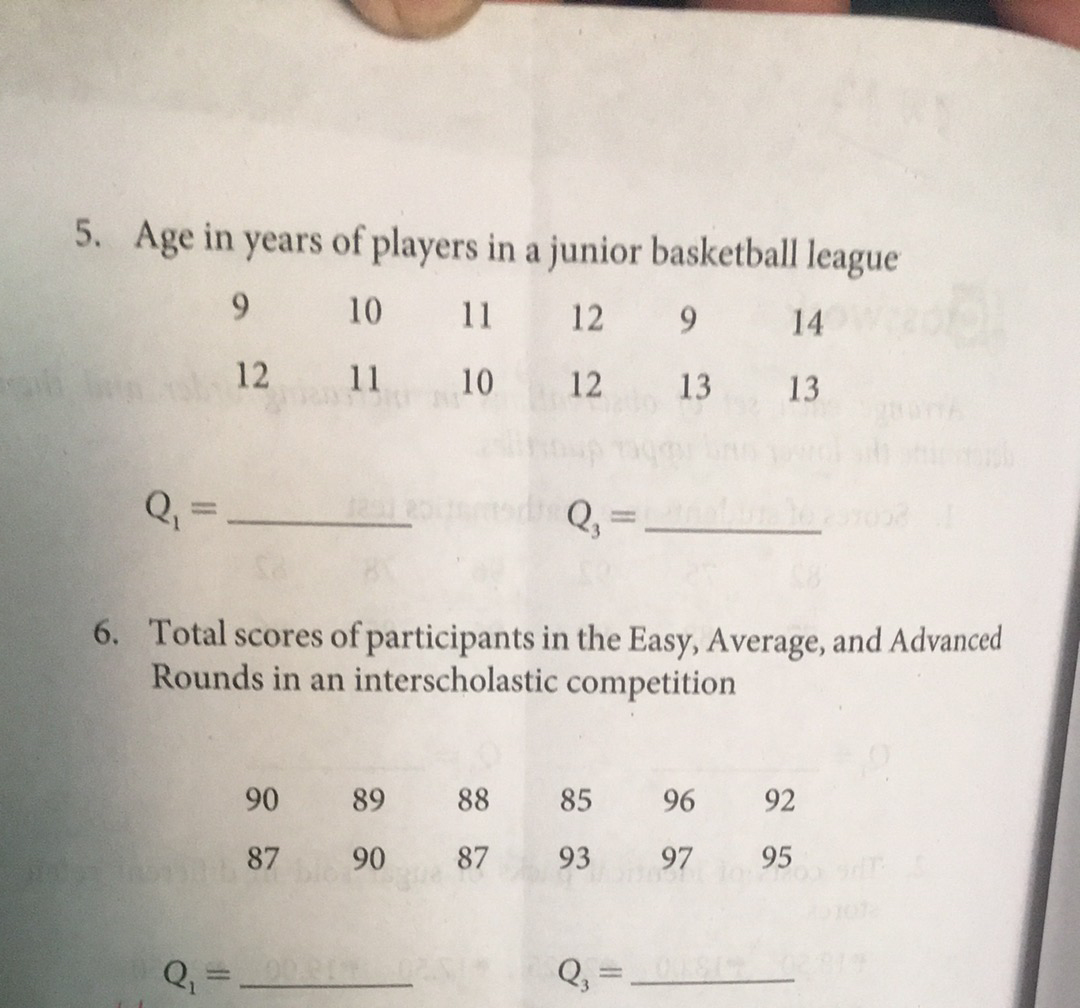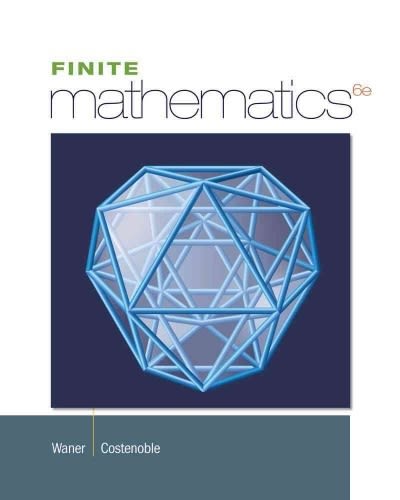Please answer this question. Please i don't understand some of this.
14. Getting a tail and a multiple of 6 15. Getting a tail and an odd numberReme " Ber. Two events A and B are independent events if the occurrence of event A does not affect the probability of event B. The probability of independent events A and B is given by Pr(AnB) = Pr(A) . Pr(B). Classwork Write I if the event is independent. Otherwise, write D. 1. Rolling a die and tossing a coin 2. Getting two cards from a standard deck without replacement 3. Attending a seminar and raining today 2904. Tossing a coin twice 5. Rolling a fair die twice Answer the following A card is selected at random with replacement from the following for cards: 8 of diamonds, 9 of spades, 7 of hearts, and 10 of clubs. Find the probability of doosing the following: 6. a red card and a 10 7. a black card and an 8 8. a 9 and a 10 9. an 8 and a 7 Solve 10. A drawer contains three red paperclips, four green paperclips, and five blue paperclips. One paperclip is taken from the drawer and then replaced. Another paperclip is taken from the drawer. What is the probability that the first paperclip is red and the second paperclip is blue? II. A bag contains five red marbles and three yellow marbles. A marble is chosen and placed back inside the bag, then another marble is chosen. What is the probability that the first marble is yellow and the second marble is red? For numbers 12 to 15: A coin is tossed and a fair die is rolled. What is the probability of the following events? 12. Getting a head and a factor of 15 13. Getting a head and a multiple of ? 2915. Age in years of players in a junior basketball league 10 11 12 9 14 12 11 10 12 13 13 Q = 6. Total scores of participants in the Easy, Average, and Advanced Rounds in an interscholastic competition 90 89 88 85 96 92 87 90 87 93 97 95 Q, = Q =Classwork Arrange each set of observations in increasing order and then determine the lower and upper quartiles. 1. Scores of students in a mathematics test 82 75 92 96 78 88 82 90 95 85 86 Q = Q = . 2. The costs of identical packs of sugar sold in different retail stores P18.50 P18.00 P20.25 P17.50 P19.00 P20.50 P18.25 P20.00 P17.00 P19.25 P21.50 P18.75 Q =. Q2 = 3. Amounts saved in a week by individual members of the Kids Savers Club P120.00 P95.00 P135.00 P80.00 P.90.00 P110.00 P105.00 P125.00 P88.00 P100.00 Q = 4. Scores of students in a science test 18 17 19 19 20 15 20 22 16 16 17 20 15 20 21 20 PA Q = Q, = 309
